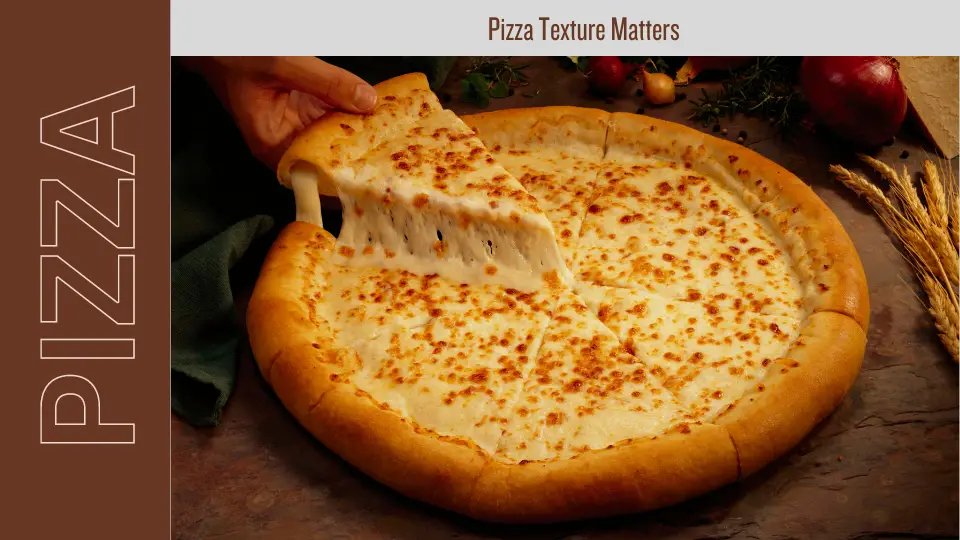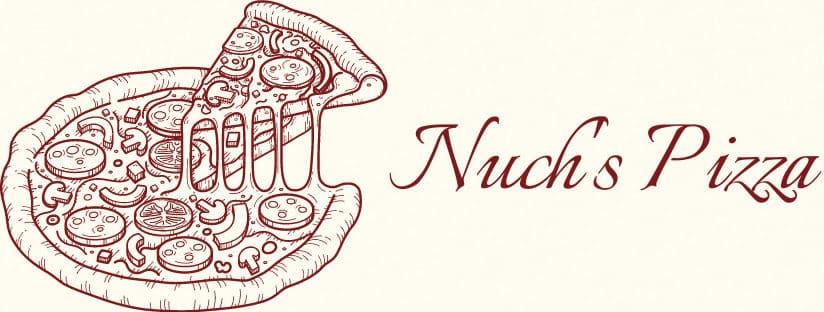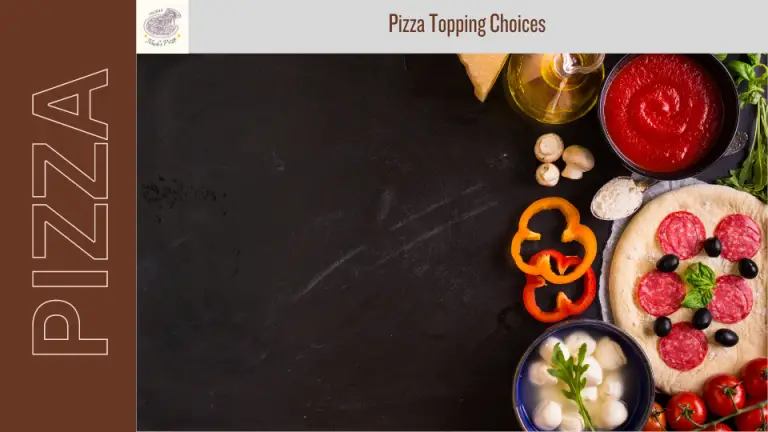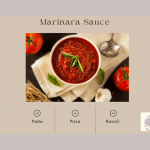Making the perfect pizza can be tricky, especially if you’re trying to stick to a certain number of toppings. Few and your slice might need more flavor, but too many could overwhelm it.
If you want every bite of your custom-made pie to be as flavorful as possible, read on how many pizza toppings you should use and 5 essential tips when choosing the right amount of pizza toppings!
How Many Pizza Toppings Should You Use?
When it comes to deciding how many toppings to put on your pizza, the size of the pizza plays a significant role. For a standard 12-inch pizza, it’s generally recommended to go with 2 to three toppings. This allows each topping to shine and complement the flavors of the sauce and cheese without overwhelming your taste buds.
However, if you’re going for an even larger pizza, like a 16-inch pie, you might opt for up to eight different toppings. But remember, the same principle still applies: too many toppings can take away from the overall taste and make it challenging to enjoy your pizza. Also, there are different criterias for deciding the number of toppings for a pizza when served in conjunction with other dishes.
Types Of Crusts
The type of crust you choose also affects the number of toppings that should be used. For example, if you opt for a thin-crust pizza, it can easily handle more toppings, as all the flavors will combine nicely and not weigh down the dough. The number of toppings can range from 3 to 5. On the other hand, for a thicker crust, such as a pan-style or deep-dish pizza, you might want to keep it between 2 and 4 toppings. In contrast, thicker crusts take longer to cook and are better suited for fewer toppings to prevent them from becoming soggy.
Texture and Flavor

Regarding texture and flavor, the number of toppings you choose should be based on personal preference. If you prefer more intense flavors in each bite, then adding more toppings would benefit you. On the other hand, if you’re looking for a light pizza with some subtle flavors, then fewer toppings might do the trick!
Pizza toppings can be divided into 2 categories: those that provide texture (e.g. sausage, mushrooms, peppers) and those that offer flavor (e.g. olives, garlic). If you’re looking to add texture to your pizza, up to three topping selections should suffice; however, if you want more flavor-packed slices of pizza, then up to 4 to 5 topping selections should do the trick.
5 Tips For Choosing Toppings For Pizza
There are certain tips and tricks you can employ when selecting pizza toppings. Here are 5 of them:
- Consider the type of pizza you are making. Is it a thin-crust, pan-style or deep dish? This will determine how many toppings to use and what kinds of toppings might be best suited for each pizza type.
- Remember that not all toppings work together—some pair better than others. For example, with their briny and savory flavor, olives pair exceptionally well with earthy and meaty mushrooms, creating a delightful combination of tastes and textures. On the other hand, while olives may not harmoniously complement the sweet and slightly spicy notes of peppers, their contrasting flavors can add an interesting twist to the overall dish.
- Balance out the flavors. If you opt for spicy toppings, such as jalapeños or pepperoni, remember to include some milder ingredients as well, like bell peppers and onions. This will help cut through the spiciness and create an overall more flavorful dish. Adding vegetables to a pizza can also add health benefits as they provide additional fiber and vitamins 1 .
- Fresh ingredients are key. Freshly grated cheese, for example, will melt beautifully and provide more flavor than pre-shredded varieties. Similarly, freshly-sliced vegetables will bring out the flavors of your pizza much better than canned or frozen varieties.
- Preference is paramount. After all, the goal of making a pizza is to create something you—and your family or guests—will enjoy eating. So if there’s a particular topping combination you know everyone loves, go ahead and make it!
How To Put Toppings On Pizza?
- To start crafting a delicious pizza, begin with a thin layer of tomato sauce. It’s important to spread the sauce to the edges, ensuring every bite is flavorful. Applying the sauce sparingly is key to avoiding a soggy pizza crust.
- After the sauce, it’s time to sprinkle the cheese evenly over the pizza. Allow small gaps between each handful of cheese to promote air circulation and even cooking. Be mindful not to add excessive cheese, as it can overpower the other delightful toppings.
- Moving on to the toppings, start with smaller amounts and gradually build up. Add a few slices of mushrooms, some pepperoni, and a handful of olives. Adjust the quantity based on your preference, ensuring a harmonious balance of flavors and textures.
- If you opt for fresh vegetables, such as bell peppers, onions, or garlic, take the extra step of sautéing them beforehand. This will enhance their flavors and prevent excess moisture, resulting in a delightful, non-soggy pizza.
- Lastly, elevate your pizza’s taste by finishing it with a sprinkle of aromatic herbs like oregano or basil. These herbs will add an extra layer of flavor, making each bite a truly delightful experience.
Following these simple steps, you can craft a delicious pizza that your family and guests will rave about. And don’t forget to have fun while doing it! After all, the best part of making pizzas is getting creative with different topping combinations. So go ahead and experiment with various ingredients—you never know what exciting flavor pairings you’ll discover!
Conclusion
How many pizza toppings should you use? The answer to this depends on your tastes and what you aim for in terms of flavor balance and texture. Usually, 3-4 toppings are usually enough for a classic pizza, while 5-7 might be better for an experimental one. Regardless, remember to cook the toppings properly and don’t forget to add a sprinkle of aromatic herbs for an extra layer of flavor. Enjoy!
FAQs
What Is The Rule Of Topping?
“Toppings on top” is a common rule of thumb regarding pizza toppings. This means wet ingredients like cheese, sauce, and vegetables should be placed on top of the dough instead of underneath. Doing this will help keep the pizza from getting soggy.
What Kind Of Toppings Can You Use?
When it comes to toppings, the possibilities are endless! From classic pepperoni and sausage to more adventurous options like pineapple and artichoke hearts, you can use whatever ingredients you prefer. Just prepare them properly first so that they cook evenly on the pizza.
Does Cheese Go On The Bottom Or Top Of A Pizza?
Cheese is usually placed on top of a pizza before you bake it. This ensures that the cheese melts evenly, giving the pizza extra flavor. If you’re feeling adventurous, you can also experiment using different cheeses in your pizzas.
Can You Put Raw Vegetables On A Pizza?
Yes, you can put raw vegetables on a pizza. However, it’s important to make sure they are cut into small enough pieces to cook through in the oven. Thinly sliced or julienned vegetables like zucchini and bell peppers work best for this purpose. Additionally, if you’re using wet vegetables like mushrooms or tomatoes, it’s best to cook them before adding them to the pizza. Doing this will help prevent the pizza from becoming soggy.
Is It Better To Use Fresh Or Frozen Pizza Dough?
The best type of dough to use depends on personal preference. Generally, fresh pizza dough is easier to work with and usually produces a more flavorful crust. However, frozen dough is more convenient and can produce delicious results if you follow the instructions closely. Whichever you choose, make sure to proof the dough properly so that it bakes evenly.

Donato Mazzi is an incredibly talented Italian chef who has earned a reputation for himself as being the absolute best in crafting delicious and authentic artisanal pizzas. His masterful technique and passion for making every dish from scratch make his pizza-making skills truly unique. With over twenty years of experience, Donato has a keen eye for detail and takes great pride in the quality of each and every pizza he creates.






